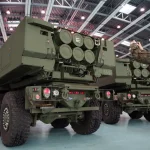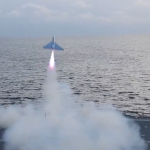 China’s People’s Liberation Army (PLA) Navy is developing means to circumvent or disable the U.S. Navy’s vast undersea surveillance network, which consists of more than 50 Sound Surveillance System (SOSUS) stations and Surveillance Towed Array Sensor System (SURTASS) arrays capable of detecting submarines from distances exceeding 1,000 nautical miles.
China’s People’s Liberation Army (PLA) Navy is developing means to circumvent or disable the U.S. Navy’s vast undersea surveillance network, which consists of more than 50 Sound Surveillance System (SOSUS) stations and Surveillance Towed Array Sensor System (SURTASS) arrays capable of detecting submarines from distances exceeding 1,000 nautical miles.
The United States operates the world’s most sophisticated
undersea surveillance network, built on decades of secret projects, such as Project Jezebel. At its core is the Integrated Undersea Surveillance System, a combination of fixed, mobile, and deployable acoustic arrays that provide vital tactical cueing to anti-submarine forces. This includes the SOSUS, with long hydrophone arrays installed on the ocean floor at key locations, and the newer Deep Reliable Acoustic Path Exploitation System, a fixed passive listening system capable of transmitting data for permanent coverage over target areas.
Complementing these are the
SURTASS, deployed on specialized ships with sensitive towed arrays that detect, track, and report submarine contacts at long range. Together, these systems create what Chinese officers describe as an “integrated, three-dimensional surveillance network” that makes it highly likely that their submarines will be detected when leaving port or operating in nearby seas.
Chinese experts speculate that the U.S. undersea surveillance network
has vulnerabilities, and naval officers have proposed targeting
individual sensor “nodes” to exploit them. In wartime, they argue, Beijing should attempt to blind the system by cutting cables, sabotaging arrays, jamming signals, or launching cyberattacks. Suggested methods include deploying remotely operated or autonomous vehicles, planting delayed-action explosives years in advance, or using drones, artificial intelligence-enabled detection systems, and even China’s distant water fishing fleet and
maritime militia to locate and disable hidden sensors.
The goal is to cripple U.S. anti-submarine warfare capabilities and secure freedom of movement for China’s expanding submarine fleet, including its nuclear ballistic missile subs. Reflecting this intent, the Chinese regime has been rapidly developing a sophisticated fleet of underwater drones and autonomous underwater vehicles and has even unveiled a new ship designed specifically to cut undersea cables, underscoring that sabotage is now part of its strategic playbook.
Many Western experts agree that the U.S. network has been highly effective for decades, posing a serious threat to China’s submarine fleet, especially in a Taiwan scenario. This effectiveness could force Chinese submarines to remain closer to shore rather than projecting power outward. The concern is confirmed by the fact that offensive measures and circumvention strategies are now being openly discussed in Chinese military circles.
China has a
deep-sea cable-cutting device that is reportedly capable of severing lines at depths up to
4,000 meters (about 13,123 feet), about twice the maximum operational range of most subsea communications infrastructure. At those depths, water pressure exceeds 400 atmospheres, necessitating a titanium-alloy shell and oil-compensated seals to prevent implosion during prolonged use.
To address cutting challenges, engineers have employed a 150-millimeter (mm)—about 6-inch—diamond-coated grinding wheel spinning at roughly 1,600 revolutions per minute, powerful enough to shatter steel while minimizing disturbance to surrounding sediments.
Although China has the technological ability to cut cables, locating cables at extreme depths is difficult. Deep-ocean segments are lightweight and thin, typically 17 mm to 21 mm in diameter, not much thicker than a garden hose. Research from the Ocean University of China describes combining multiple sonar modalities to improve detection, including for buried cables. While the deep-sea portions are accessible only to specialized and covert assets, shallower coastal segments can be reached by anchors, submersibles, and drones.
If the PLA Navy manages to sever a cable, the United States has limited capacity to maintain or repair its undersea surveillance network. Its only dedicated cable-repair ship, the aging
USNS Zeus, is scheduled for decommissioning, leaving just the special-mission submarine USS Jimmy Carter for covert operations.
The
Jimmy Carter (SSN-23), a modified Seawolf-class submarine with a 100-foot hull extension called the Multi Mission Platform, is believed to be capable of tapping fiber-optic cables, installing or servicing covert surveillance equipment, cutting adversary cables, and accessing underwater infrastructure. With fewer than 10 repair ships available worldwide, these vessels are crucial. And with the Zeus gone, the Jimmy Carter would become a particularly high-value wartime target.
Analysts warn that the U.S. Navy must expand and protect its cable-repair fleet because safeguarding undersea surveillance may prove as critical as carriers, submarines, or destroyers in a future conflict with communist China.
(Visited 5 times, 1 visits today)
![]() China’s People’s Liberation Army (PLA) Navy is developing means to circumvent or disable the U.S. Navy’s vast undersea surveillance network, which consists of more than 50 Sound Surveillance System (SOSUS) stations and Surveillance Towed Array Sensor System (SURTASS) arrays capable of detecting submarines from distances exceeding 1,000 nautical miles.
China’s People’s Liberation Army (PLA) Navy is developing means to circumvent or disable the U.S. Navy’s vast undersea surveillance network, which consists of more than 50 Sound Surveillance System (SOSUS) stations and Surveillance Towed Array Sensor System (SURTASS) arrays capable of detecting submarines from distances exceeding 1,000 nautical miles.










